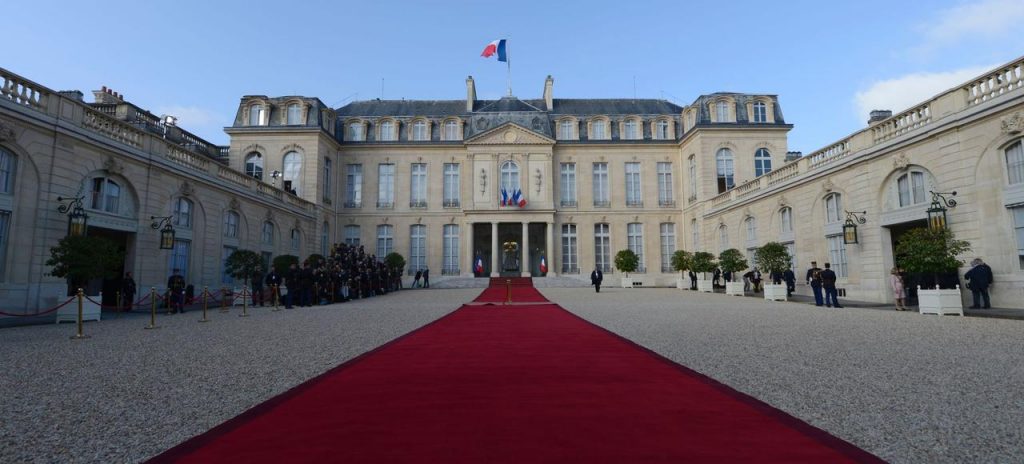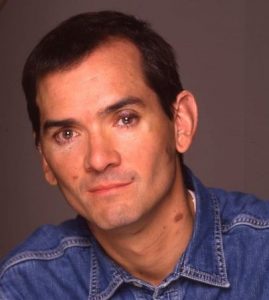The Élysée Palace is the presidential house in France, the equivalent of the American White House. Synonym of power, the Palace has been the home of kings and presidents of France one after the other. From its construction to present day, the Elysée has been the witness of dramas, romantic affairs, political betrayals, and comical anecdotes. History has been made between its walls. The Elysée Palace has seen everything, from state visits by foreign leaders to salacious scandals: this is why it is so fascinating. It is also a window into French culture.1

At the beginning of the eighteenth century, the Elysée Palace began as the Faubourg Saint-Honoré on a grassy hill in the country surrounded by a few farms. As Paris grew, it became located between the street Faubourg Saint-Honoré and the Big Courts along the Champs-Elysées Avenue.2
The architect Armand-Claude Mollet possessed land that he sold in 1718 to Henri-Louis de la Tour of Auvergne, count of Evreux.3 The contract stated that Armand-Claude Mollet would be in charge of building a hotel there; it was intended to be the residence of the count of Evreux. The Hotel was built and decorated between 1718 and 1722. The gardens of the Elysée is a shaded and flowery two hectares of countryside. When the count of Evreux built the courtyard in 1718, he installed formal French gardens characterized by symmetries and perspectives. The gardens were meant to demonstrate the power and fortune of its owner.4 At his death in 1753, the count of Evreux left the most famous hotel of its time. It was admired by all, including Blondel, considered the best French architect of the eighteenth century, who described it as, “the most beautiful country cottage of the Paris’ neighborhood.”5

The decoration of the Palace started with the women, mistresses, and wives of kings and presidents, who contributed to the embellishment of the property. Before the Elysée was home to presidents of the Republic, it belonged to France’s kings, starting with King Louis XV, who gave the Hotel of Evreux—ancient name of the Élysée Palace—to his mistress, the Marquise de Pompadour, Jeanne Antoinette.6 The Marquise was very interested in the gardens of the property, because she had a little girl and she made a playground out of them that was something of an ancestor to Disneyland. Because of her young spirit, it was a playground for the Marquise as well. As the fashion was to play at being a shepherd, the Marquise had a herd of sheep. One day she tried to let them in her apartment, where the walls were covered with mirrors. The poor animals, terrified, found themselves lost, and destroyed the place, causing a scandal.7

The sculpture in one of the gardens made by François-Xavier Lalanne reminds us of the affection that the Marquise had for the small animal. She also gave luxurious dances in her gardens. The parties reflected the image of the owner of the place: extravagant, luxurious, and sophisticated. 8
The Elysée Palace will be long remembered as a place of reception, culture, and pleasure for Parisians and for the many visitors who come each year to see it.
- Véronique Rampazzo and Patrick Lesueur, L’Elysée (Le Cherche Midi, 2010), 6. ↵
- Véronique Rampazzo and Patrick Lesueur, L’Elysée (Le Cherche Midi, 2010), 8. ↵
- Georges Poisson, L’Élysée: histoire d’un palais (Pygmalion, 2010), 523. ↵
- Jacques Santamaria Duhamel, L’Élysée, coulisses et secrets d’un palais (Plon, 2012), 395. ↵
- Présidence de la République, Le Palais de L’Élysée et son histoire (www.elysee.fr, 2015). ↵
- Evelyne Lever, Madame de Pompadour: a Life (New York: Farrar, Straus and Giroux, 2002), 35, 37. ↵
- C. Leroux-Cesbron, Le palais de l’Élysée, chronique d’un palais national (1925), 44. ↵
- Claire Bommelaer, Visitez les jardins de l’Élysée (www.lefigaro.fr, Le Figaroscope,2012). ↵



28 comments
Tyler Sleeter
Interesting article. I had never heard of the Elysee Palace, but I really enjoyed reading this article. It was interesting to me that it began as a hotel but ended up becoming the French palace. I had heard of the Marquise de Pompadour, but had never heard of her fondness for sheep. I think it is quite funny that she brought her herd of sheep inside the palace, and that the room was destroyed. It seems that the palace was quite beautiful at the time and remains so today.
Maria Callejas
Great title pick, just by reading it I get the best preview. I immediately know the “Elysee Palace” is the presidential house of France. Great use of evidence, it is amazing to know how the palace has not only house governmental high commanders, but also royalty. This gives much more value to the building for sure. The French indeed had a fascination towards gardens, are you describe the one located in the Elysee Palace was not only beautiful, but it sent a clear message of power and distinction. The same goes for the art. Overall, great job!
Megan Barnett
Tremendous introduction, it really caught my attention! I thought your title was very creative as well. I liked that you included a story with some humor, as we all know that every household has its moments. The pictures you selected certainly illustrated your topic clearly and more efficiently. However, from your introduction I thought you were going to give more stories that occurred in the Élysée Palace as it seemed you only mentioned a few.
Anthony Robledo
The pictures used in this article are amazing!. It shows just how magnificent the Elysee Palace really is. I have been to the White House a few time, and honestly its not that appealing. It always interest me to see other places similar to the White house though. For example, In Argentina there “White House” is actually pink! It’s called La Casa Rosada, or the Pink House. Comparing Argentina’s Pink House and the Elysee Palace to the White house makes me wonder how much better the White House could be. good job
Andrew Rodriguez
The writer of this article had amazing images in their article. The symbol the building should be recognized as to the white house. The beauty of the architecture is outstanding, very pleasing to the eye. This set the standard for the future power buildings in my opinion, very groundbreaking and breathtaking in which power should do. King louis XV should be grateful to be one of the first to be in that building. This article used the images to the max potential It could have been used in.
Thomas Fraire
This article over the Elysèe palace was fascinating. I was always learning about the roots and organs of things from other countries. In American society, we tend only to know our history and learn our language, but learning all this stuff in this class is just amazing to me I love seeing how different cultures evolve and saw how they became who they are as a society today.
Amanda Figueroa
This is a very informative article about the Elysee Palace which I had never heard of. I did not know there was another “White House” and it’s interesting to read how it came to be. The short anecdote about the little girl gave the story some humor. How interesting that she tried to let sheep in. I wonder what how she felt as they started panicking.
Michelle Falcon
The Elysee Palace is a place I have seen many pictures of and have seen in many movies. However I never knew anything about it besides the fact that it was in France. After reading this article I now know more information about it than I could have imagined. Such as how it started as a small place on a hill and turned in tot what it is know as today, very well fitting to one of its names, “The French White House”. Over all it was a very good article , that i very much so enjoyed reading.
Cameron Ramirez
I have been to the White House in Washington DC countless of times, and I still can not believe how magnificent and awe-inspiring the home of our many presidents was and has been. I have been very fortunate to be able to see our White House. Your article about the “French” White House or should I say Elysée Palace. Anyways I thought it was well written out and the pictures you added to your descriptive article really helped convey your article.
Matthew Rios
An interesting article. I’m not sure in terms of the sheer scale, but the Elysee Palace and its grace reminds me of the Palace of Versailles. Intricate and grand architecture mixed with beautiful landscaping makes a place fit for mortal kings and queens. I suppose your next interesting piece could be who they hired to build it, or what sort of labor force they used.